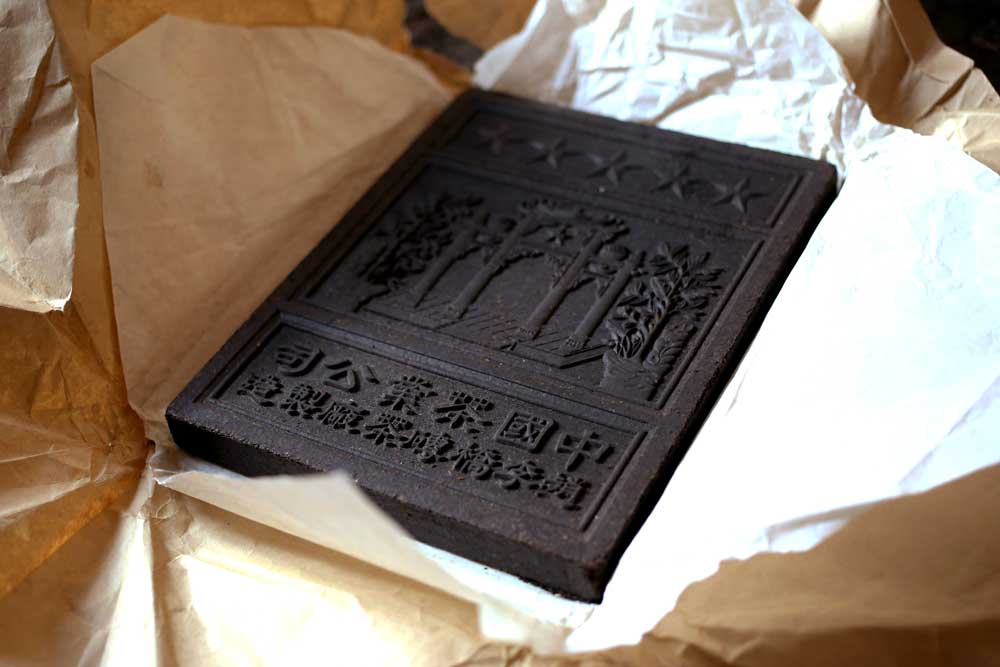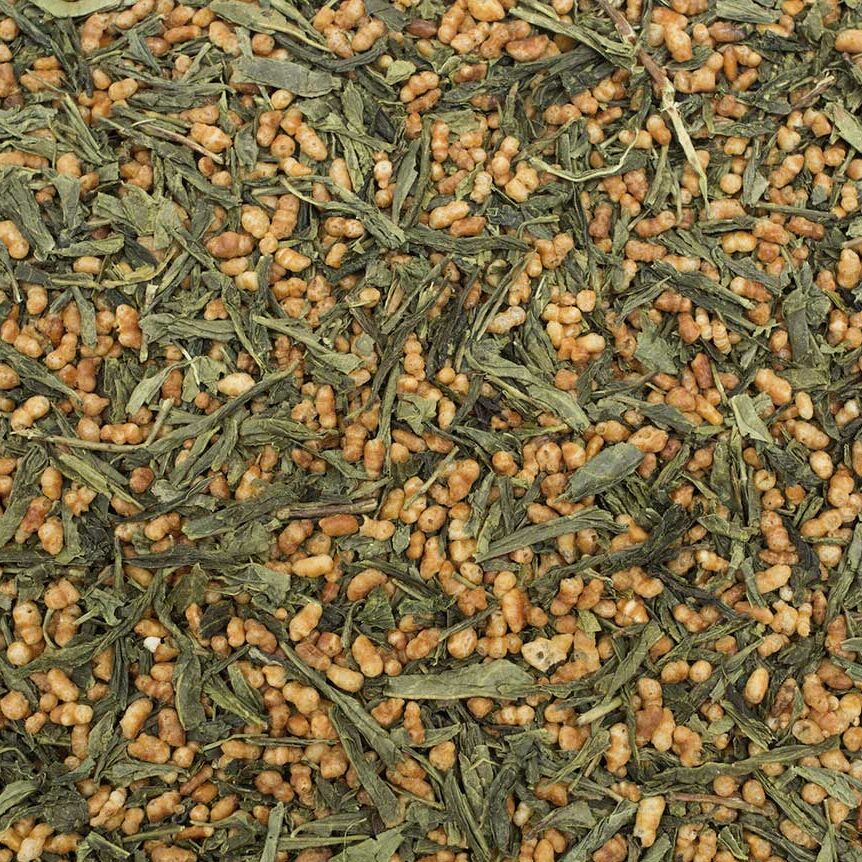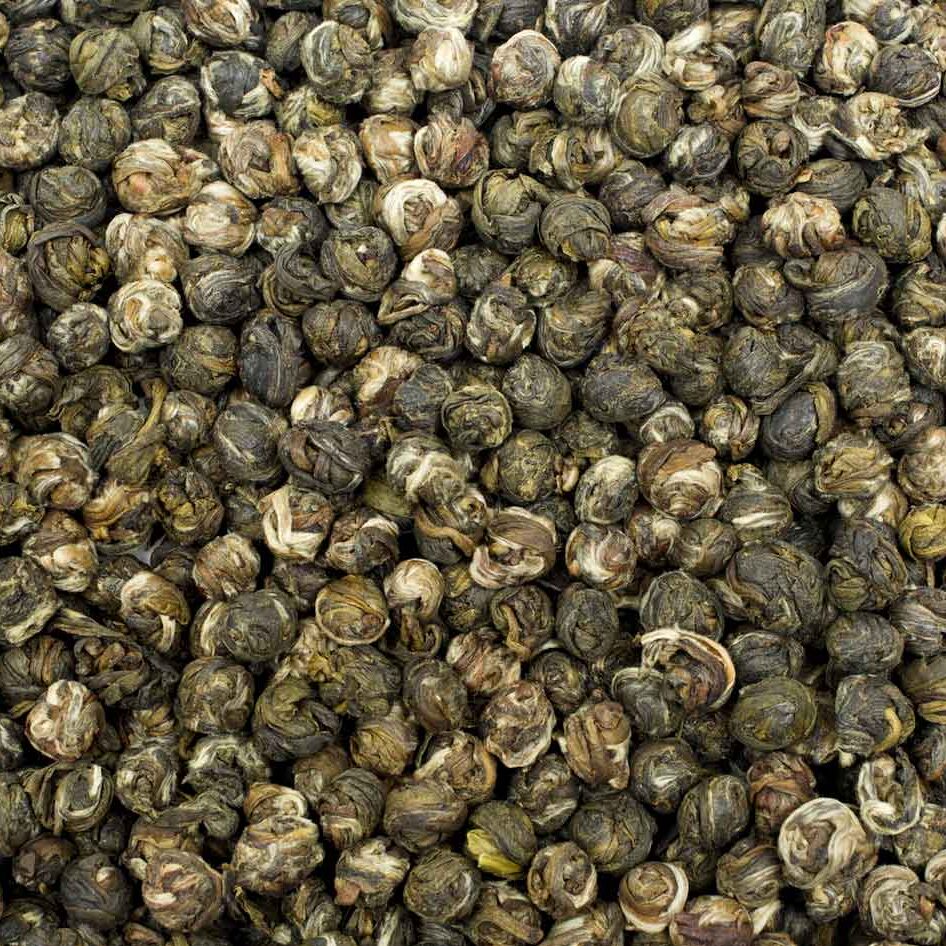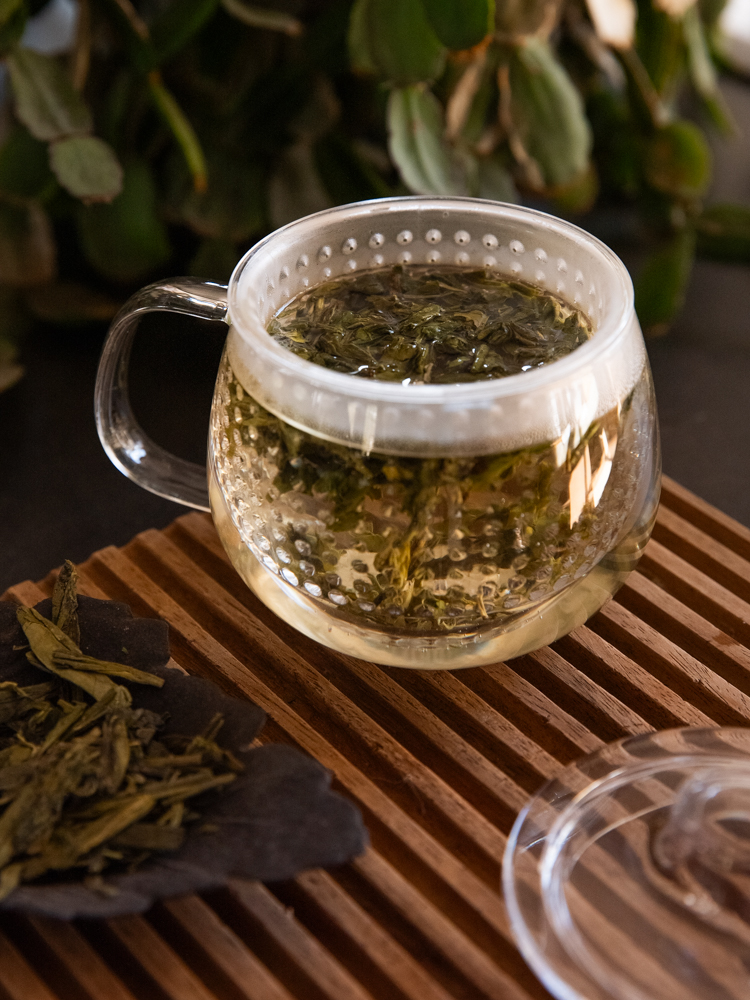Chinese tea is traditionally prepared using the Gong Fu method. This method originated in Fujian but has since spread across East Asia with each culture adopting it's own regional nuances. Preparing Gong Fu tea is all about brewing the best tea possible in an elegant, ceremonial-like process.
A typical Gong Fu set includes a kettle, a bamboo scoop, a clay teapot or Gaiwan (a bowl with a lid), a set of small cups, a decanting pot (chahai), a tray and last but not least, tea! The tray on which all this sits features a drip tray, used for pouring excess water and tea away.
The main steps to preparing Gong Fu tea are as follows;
1. The Gaiwan or teapot is rinsed with hot water.
2. Tea is placed into the Gaiwan or teapot with the bamboo scoop (usually at a ratio of 10g per 100ml)
3. Hot water is poured onto the tea to wash the leaves then the liquid is poured away.
4. Hot water is poured again onto the tea leaves, the lid closed and hot water poured over the pot.
5. The tea is brewed for 30 seconds to a minute.
6. The liquor is decanted in the Chahai to homogenise the brew and from there into each cup.
7. The process is then repeated until the flavour of the tea starts to fade. With good quality leas this can be up to 7 times.
Unlike western tea pots, Gong Fu tea sets rarely include a strainer. This is because they are not necessary. The large whole leaves are can easily be strained with the lid of the Gaiwan or narrow spout of a clay teapot.
At first glance all this equipment might seem a bit overwhelming but Chinese tea can also be enjoyed with a simple set up. All that is really necessary is a pot and a cup. The main thing to consider when brewing Chinese tea is to enjoy the process of brewing multiple cups and experiencing the change in taste with each infusion. Chinese tea culture is more about savouring the moment rather than grabbing a quick cuppa!
A quick and easy alternative to a Gaiwan in this neat little glass mug with built in strained from Kinto called a
Uni Mug



